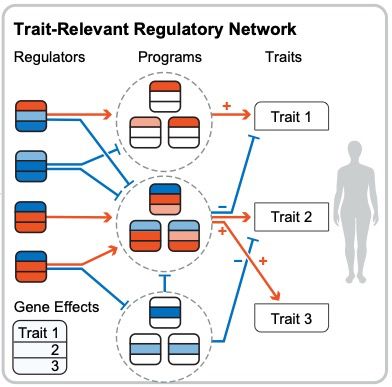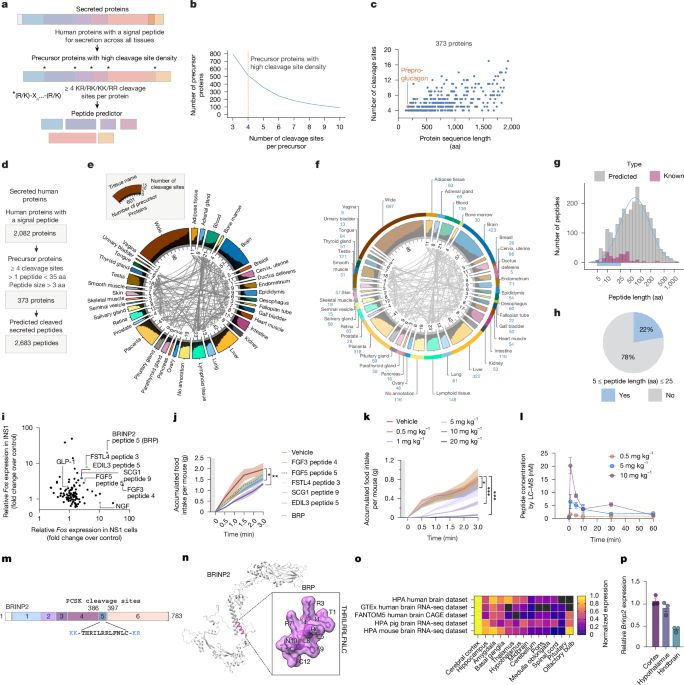
MBE | A General Principle of Neuronal Evolution Reveals a Human-Accelerated Neuron Type Potentially Underlying the High Prevalence of Autism in Humans
@astarr2.bsky.social & Fraser used single-cell RNAseq to determine if abundant cell-types have more conserved gene expression patterns in primates; their findings also argue for a link between the evolution of human cognition and autism.
🔗 doi.org/10.1093/molbev/msaf189
#evobio #molbio #autism
10.09.2025 09:58 — 👍 5 🔁 3 💬 1 📌 0
Thank you so much for the kind words!
13.09.2025 01:25 — 👍 1 🔁 0 💬 0 📌 0
Congratulations to Nathan for conceiving and designing this unified demultiplexing toolkit!
24.03.2025 22:12 — 👍 7 🔁 2 💬 0 📌 0
Watching axons on the move
Check out this study, ranked ‘Fundamental’, on how the ligand Netrin mediates axon guidance through haptotaxis and chemotaxis.
elifesciences.org/articles/100...
19.03.2025 21:01 — 👍 25 🔁 8 💬 0 📌 2
This is an awesome approach! I’d be very curious if the causal gene expression change-phenotype links could be used to predict hemoglobin in other species. E.g. if you take all the causal links, compare expression between humans and mice, can you predict what hemoglobin levels in mice are?
26.01.2025 00:21 — 👍 1 🔁 0 💬 1 📌 0

Modern GWAS can identify 1000s of significant hits but it can be hard to turn this into biological insight. What key cellular functions link genetic variation to disease?
I'm very excited to present our new work combining associations and Perturb-seq to build interpretable causal graphs! A 🧵
26.01.2025 00:13 — 👍 320 🔁 118 💬 6 📌 10
Glad I could play a role in helping to explore the great findings enabled by this awesome new tool! Excited to see what cool biology will be uncovered using sc-SPLASH in the ever expanding single cell RNA-seq datasets, particularly from emerging and non-model organisms!
24.12.2024 21:08 — 👍 2 🔁 0 💬 0 📌 0
sc-SPLASH provides ultra-efficient reference-free discovery in barcoded single-cell sequencing https://www.biorxiv.org/content/10.1101/2024.12.24.630263v1
24.12.2024 19:47 — 👍 2 🔁 2 💬 0 📌 1
I’d love to be added!
26.11.2024 19:10 — 👍 2 🔁 0 💬 0 📌 0
Similarly, tons of very conserved regions lack any annotation. One factor might be that there are a lot of important contexts that haven’t been profiled sufficiently (e.g. during brain wiring which has incredibly complex gene expression patterns, immune cells stimulated with many compounds, etc.)
19.11.2024 22:23 — 👍 2 🔁 0 💬 0 📌 0
genomics @ stanford
gpreising.github.io
he/him
Postdoctoral researcher at MPI-PL, interested in molecular brain evolution and complex trait genetics.
A platform for life sciences. Publications, research protocols, news, events, jobs and more. Sign up at https://www.lifescience.net.
Linguist, cognitive neuroscientist and wannabe geneticist. Associate Professor at University of Iceland. Views are my own. https://uni.hi.is/rosas and https://english.hi.is/staff/rosas
Bioscientist. Associate Professor at Rice University. Neural crest, zebrafish, enteric nervous system, gut-brain axis, neurodevelopment. Editor-in-Chief, Differentiation.
Professor of Anthropology at Washington State University. Faculty page: https://anthro.vancouver.wsu.edu/people/hagen/
Views expressed are my own and do not reflect those of my employer or other organizations I'm affiliated with.
Postdoc studying pathogenesis and evolution of RNA viruses
STEM outreach nonprofit: STEMOutreachCollective.org
(They/them or none)
Postdoc @ Kaessmann and Sasse labs @zmbh.uni-heidelberg.de
Previously PhD @ Sebé-Perdós lab @crg.eu
Interested in regulatory genomics, evolution, machine learning, and especially the combination of all of the above.
https://anamaria.elek.hr/
PhD candidate in the Kvon Lab @ UC Irvine 👩🏻🔬🧬
Genome Scientist. Studies how DNA makes humans, mice, plants, microbes. At Lawrence Berkeley National Lab and Joint Genome Institute. Views are my own.
Developmental neurobiologist working on human cerebellar development and disease.📍Seattle, Washington
Scientist & artist. Prof at UMass Chan Med School & Broad Institute. Rice U alum. Founder of Zoonomia & DarwinsArk.org. Wants your dog’s DNA. And your cat’s! 🇸🇪🇳🇿🇺🇸
Waitress turned Congresswoman for the Bronx and Queens. Grassroots elected, small-dollar supported. A better world is possible.
ocasiocortez.com
Sendoel lab at the University of Zurich, alumnus of the The Rockefeller University, NYC.
We are excited about mRNA translation, stem cells and cancer.
www.sendoellab.org
Supporting researchers and authors with professional editing 📝 grant writing 💰 manuscript proofreading👩💻 book editing📚 medical writing✍️ scientific consulting👩🏻🔬 author services 📖
👉Visit www.eloquenti.com
Evo-Devo neurobiologist | Associate Prof. at Institute of Genomics, University of Tartu | Cerebellum Development: from Evolution to Disorder
EMBO postdoc @teichlab @SCICambridge | Single-cell genomics and gene regulation | PhD in evodevo genomics @kaessmannlab @UniHeidelberg
PhD student @UniHeidelberg | Kaessmann lab | previously @UTokyo
Mobilizing the fight for science and democracy, because Science is for everyone 🧪🌎
The hub for science activism!
Learn more ⬇️
http://linktr.ee/standupforscience



